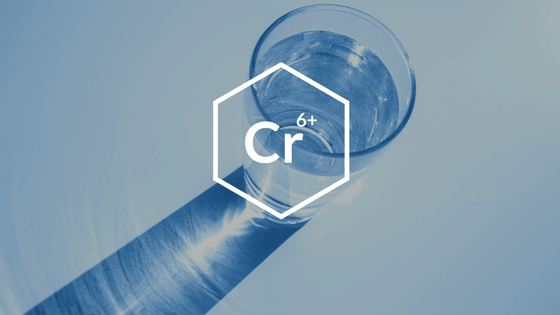|
Environmental policy has made strides in reducing greenhouse gasses and embracing renewable energy. However, while the water is clearer, something still lurks in its shallows. Made famous by the Erin Brockovich case, chromium-6 still takes headlines even 23 years after becoming a national concern.
What is Chromium-6? Chromium-6, or hexavalent chromium, is a mineral that occurs naturally in the environment as well as artificially in manufacturing waste. Despite being organic, the Environmental Working Group (EWG) has linked it to cancer in rats and humans. Why is Chromium-6 a Health Concern? As stated above, the EWG has linked consumption or exposure to high quantities of chromium-6 to cancer in humans and rats. Furthermore, the Occupational Safety and Health Administration (OSHA) alerts that extended exposure to chromium-6 may damage eyes, lungs, and respiratory pathways. Chromium-6 also contains corrosive properties, such as aggravating allergic contact dermatitis (rashes) on the skin and eroding tooth enamel. How Does Chromium-6 Contaminate Water? Chromium-6 occurs naturally in the environment and is most common in topsoil and rocks. Industrial waste, such as that of leather, textiles, metal alloys, and pigments is the source of artificial occurrences of this same mineral. The fact that it thrives in topsoil and rocks means that naturally occurring chromium-6 can easily reach water sources, like lakes, ponds, and older wells. Furthermore, leather and textile industries usually do not provide a barrier between their waste and the ground, allowing industrial chromium-6 to seep into the soil. Finally, as metal alloys and pigments typically form the bulk of architectural projects, what chromium-6 they contain may reach water sources, as well. Is it Regulated? OSHA has established regulations for chromium-6 in shipyards, construction, and general industry. Simply put, these guidelines require that all who are exposed to chromium-6 wear some sort of protective covering. As far as water goes, things are not as strict. The Environmental Protection Agency (EPA) has set a limit for total chromium, at 100 parts per billion (ppb). However, since chromium-6 and chromium-3, an essential nutrient, exist in unequal amounts, chromium from some water sources may consist of 100% chromium-6. Some independent groups have called for stricter guidelines. However, they are not in effect nationally. California’s Office of Environmental Health Hazard Assessment (OEHHA), for instance, set a public health goal of 0.02ppb in 2011. Unfortunately, this legislation was struck down in 2014, for the far more lenient 10ppb. In 2010, the Environmental Working Group (EWG), a non-governmental organization, has conducted its own research, finding chromium-6 in over 75% of 60,000 samples of drinking water around the United States. While this evidence supported the OEHHA’s case for a legal limit, it did not spur any legislation of its own. Simply put, chromium-6 is not, as itself, regulated by national policy. What results is that both private- and public-sourced water consumers are at risk for cancer, gastrointestinal disruption, and skin inflammation. Fortunately, you can gauge your risk with a test. While municipally-administrated screenings are usually more accurate, personal tests are also available online. How to Remove Chromium-6 From Your Water The United States has yet to establish a protocol for removing chromium-6 from municipal water supplies. However, products such as Adya Clarity® convert chromium-6 to chromium-3, a vital nutrient your body uses to process sugars, proteins, and fats. Adya Lab Test Other solutions include buying bottled water or collecting spring water. Nonetheless, bottled water usually comes from a tap, and bottle waste does more harm to the environment than it benefits, public health. Spring water comes without the waste, but not without the exposure to topsoil, sediment, and air pollution that may contain chromium-6. Environmental science and steadfast activism have helped the conservationally-concerned fight for renewable energy, sustainable sources, and healthy resources for consumers, and work remains to be done. Although it will be long before lawmakers put hexavalent chromium at the top of their lists, using Adya Clarity® will help you cultivate your own healthy environment and, as news spreads, community. |
AuthorWritten by http://www.infectioncontroltoday.com Archives
December 2016
|


 RSS Feed
RSS Feed
